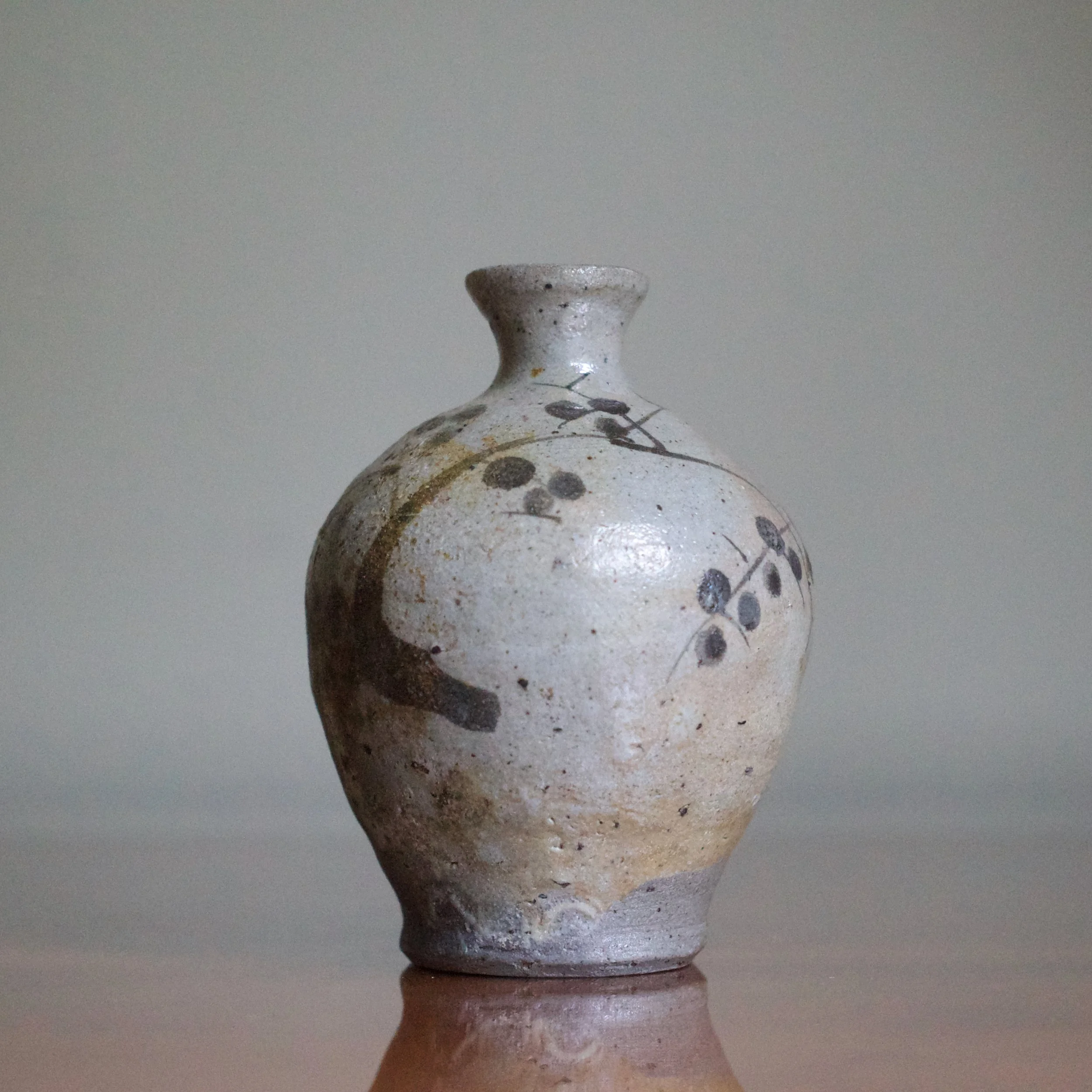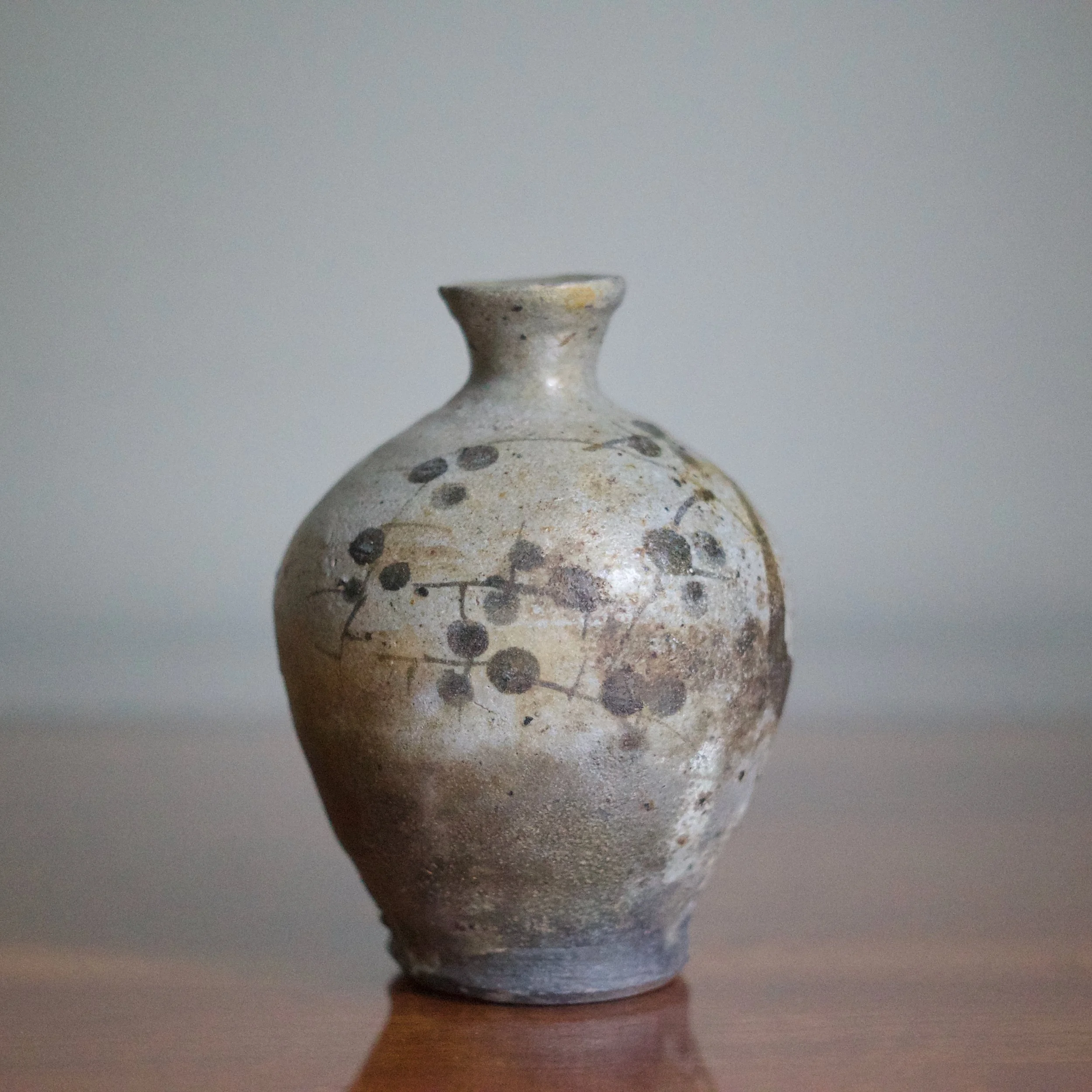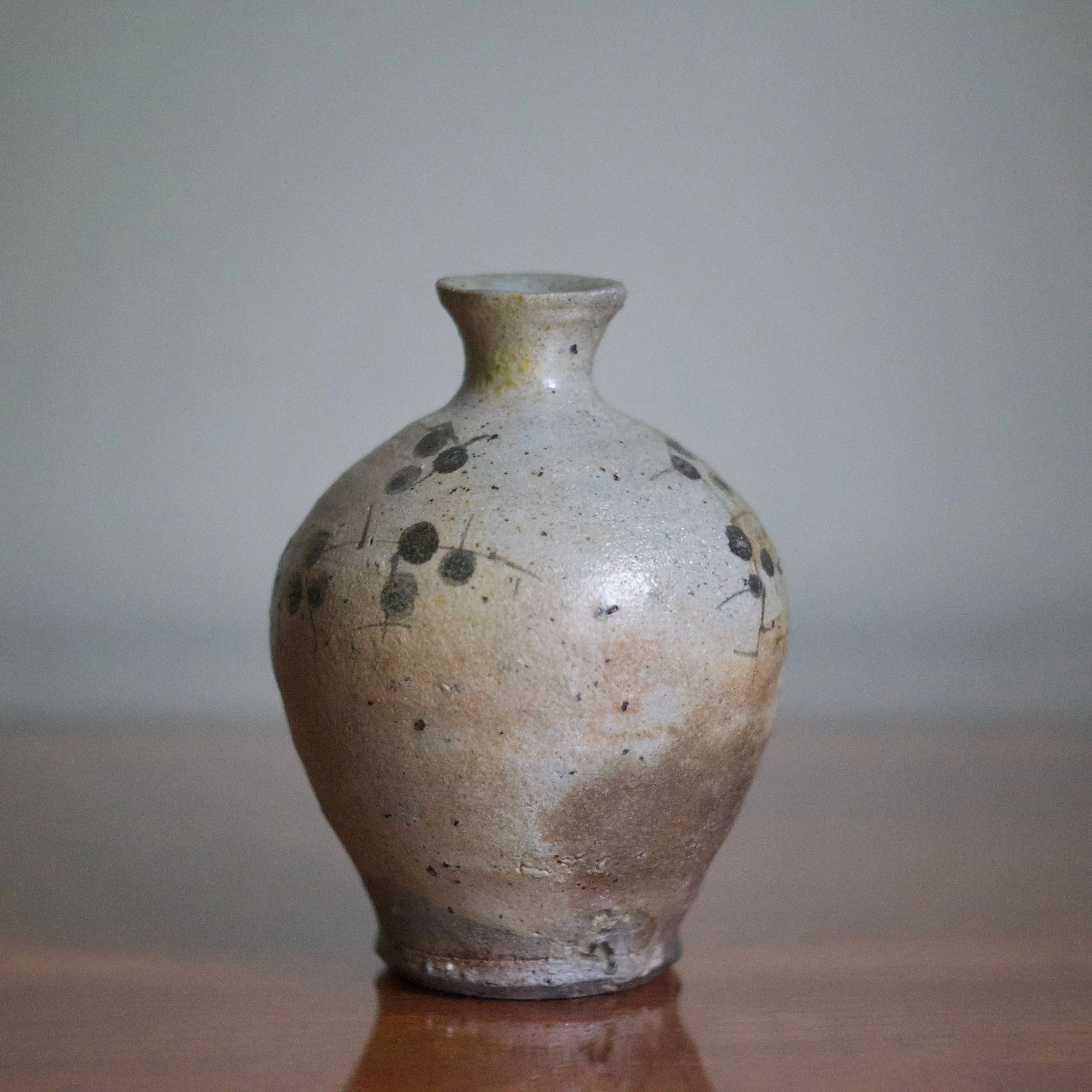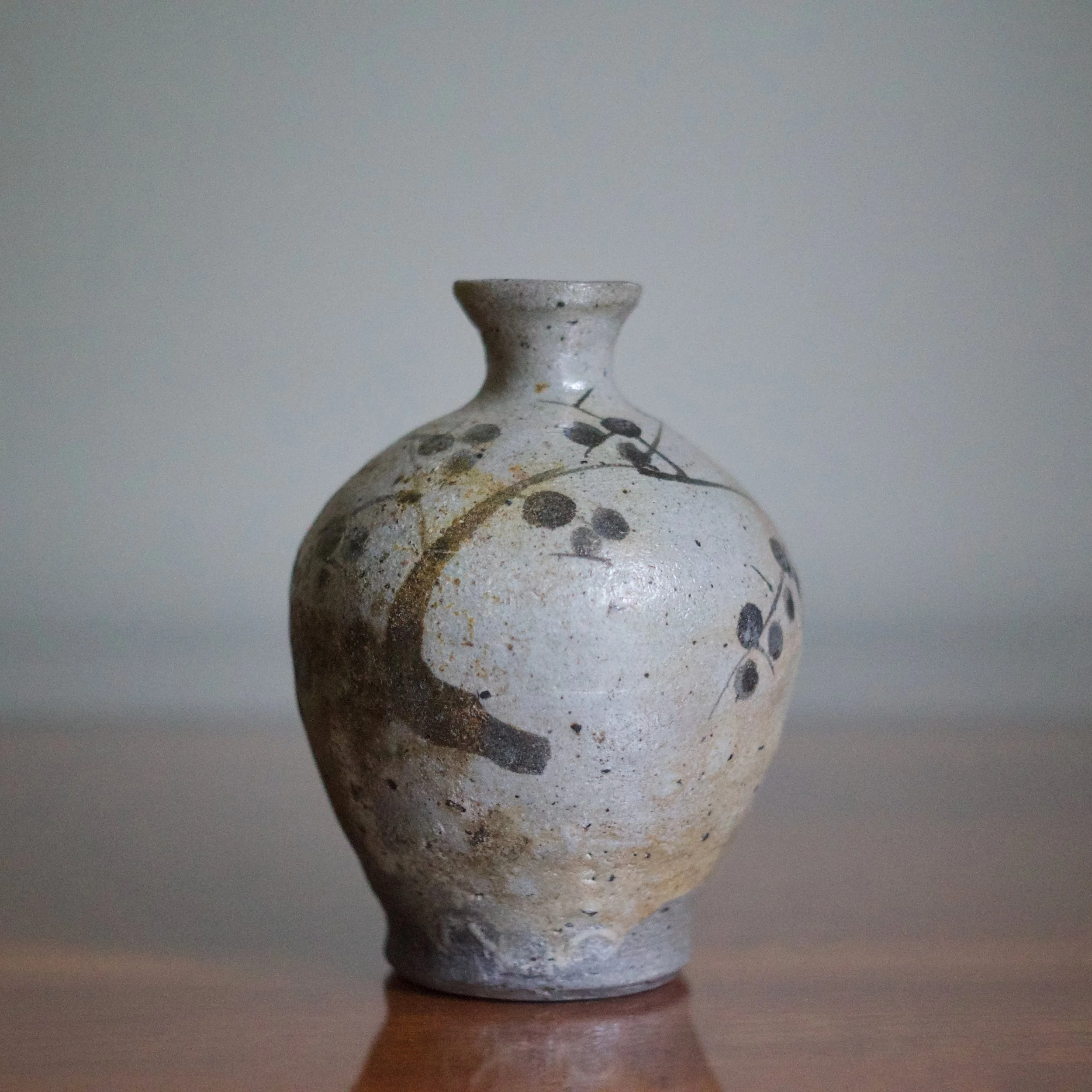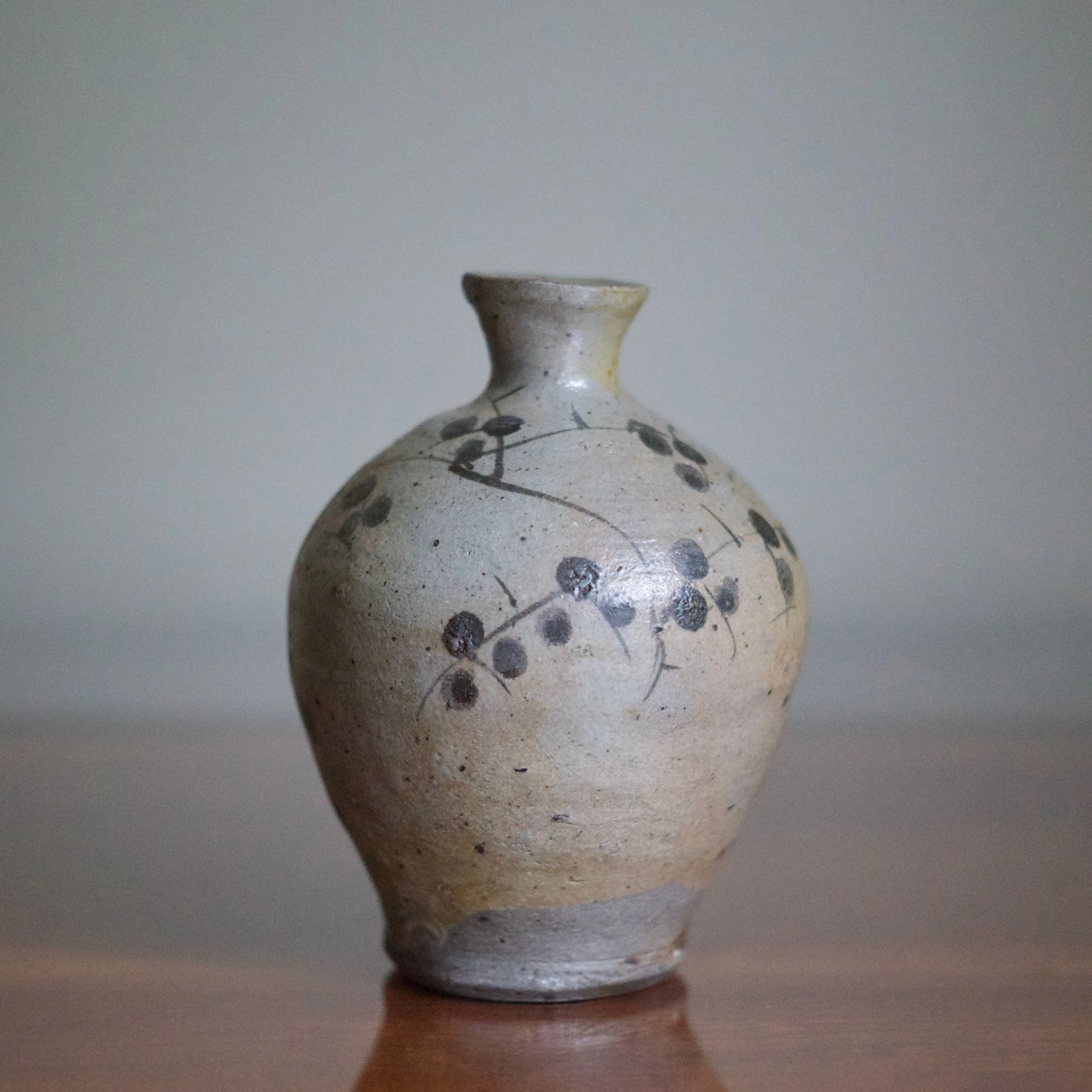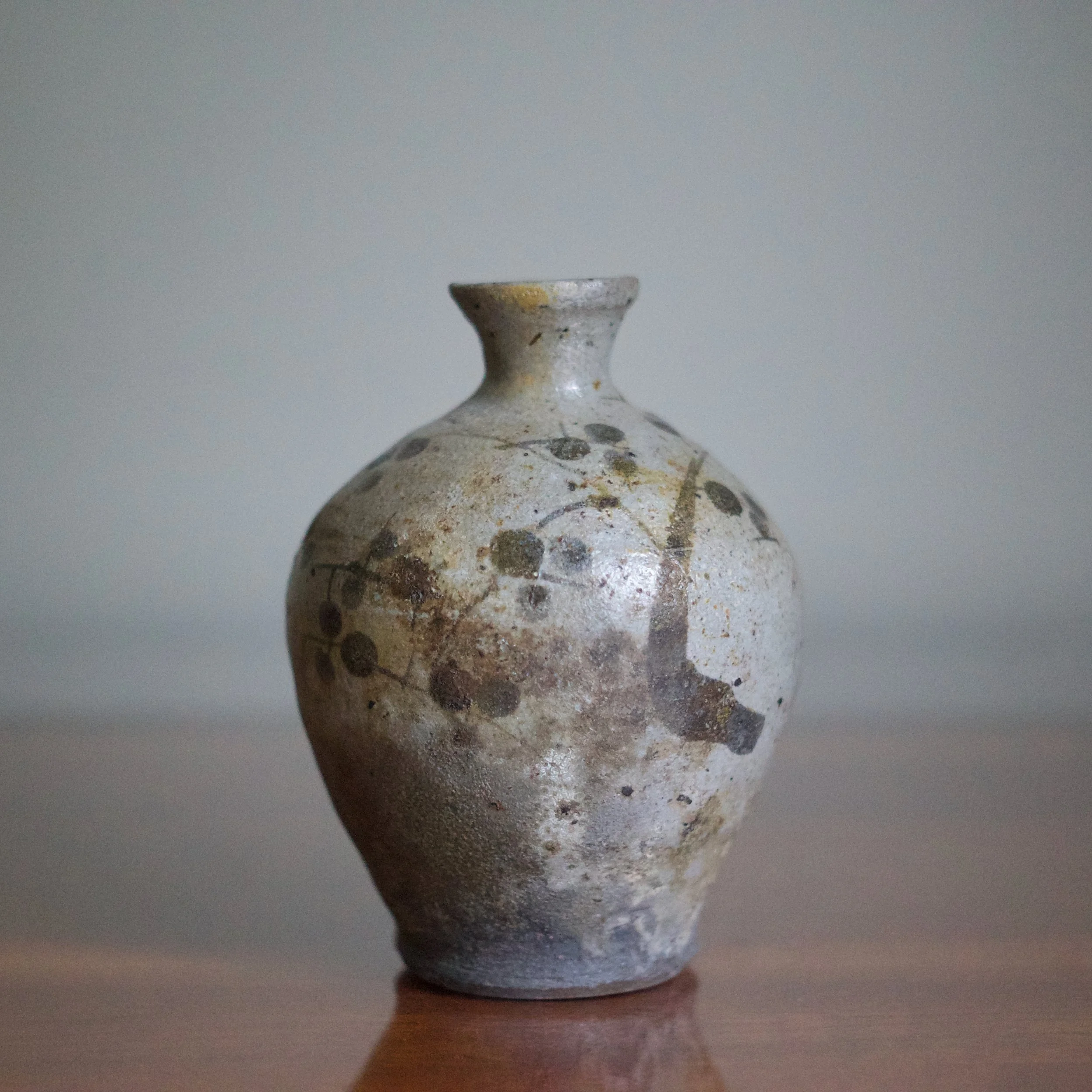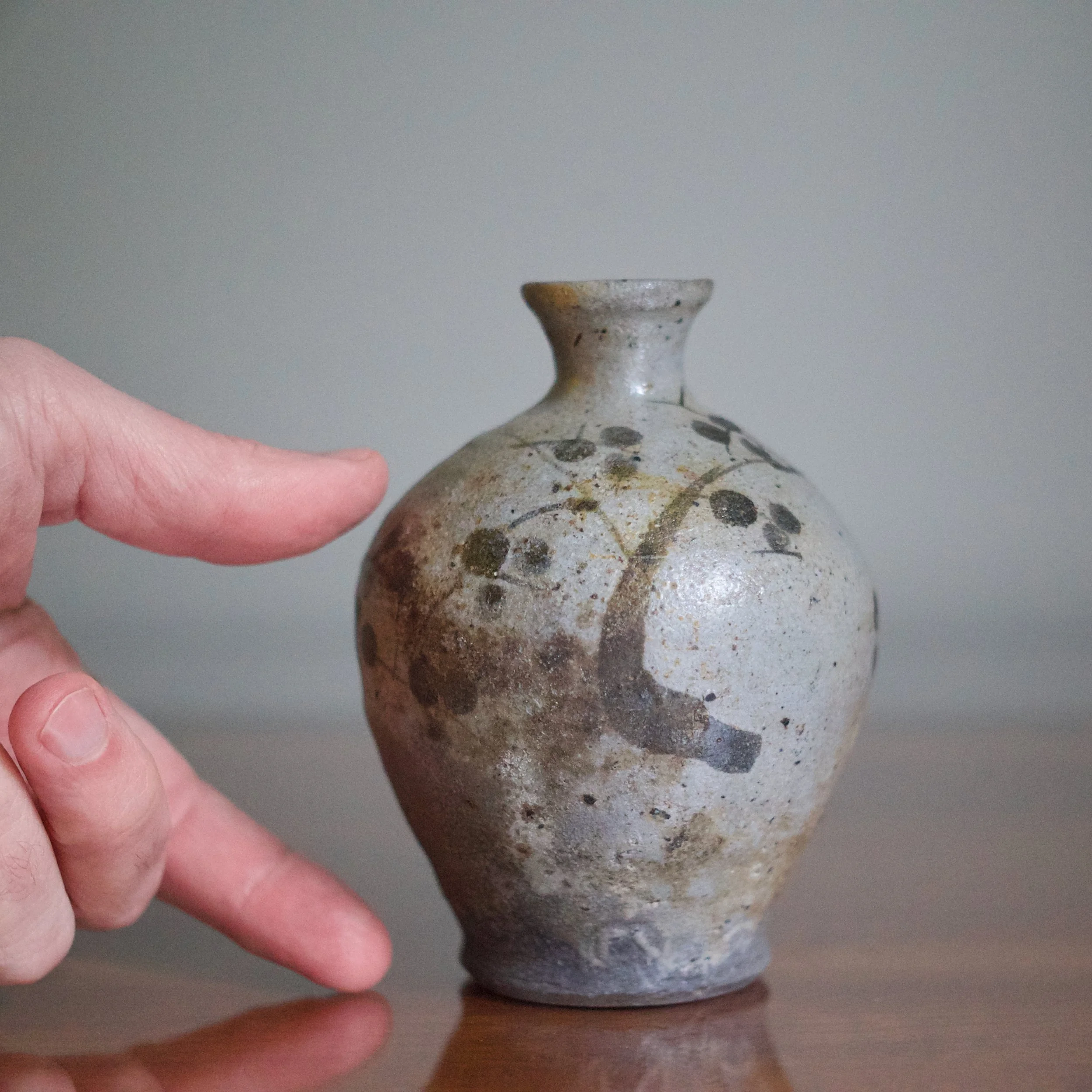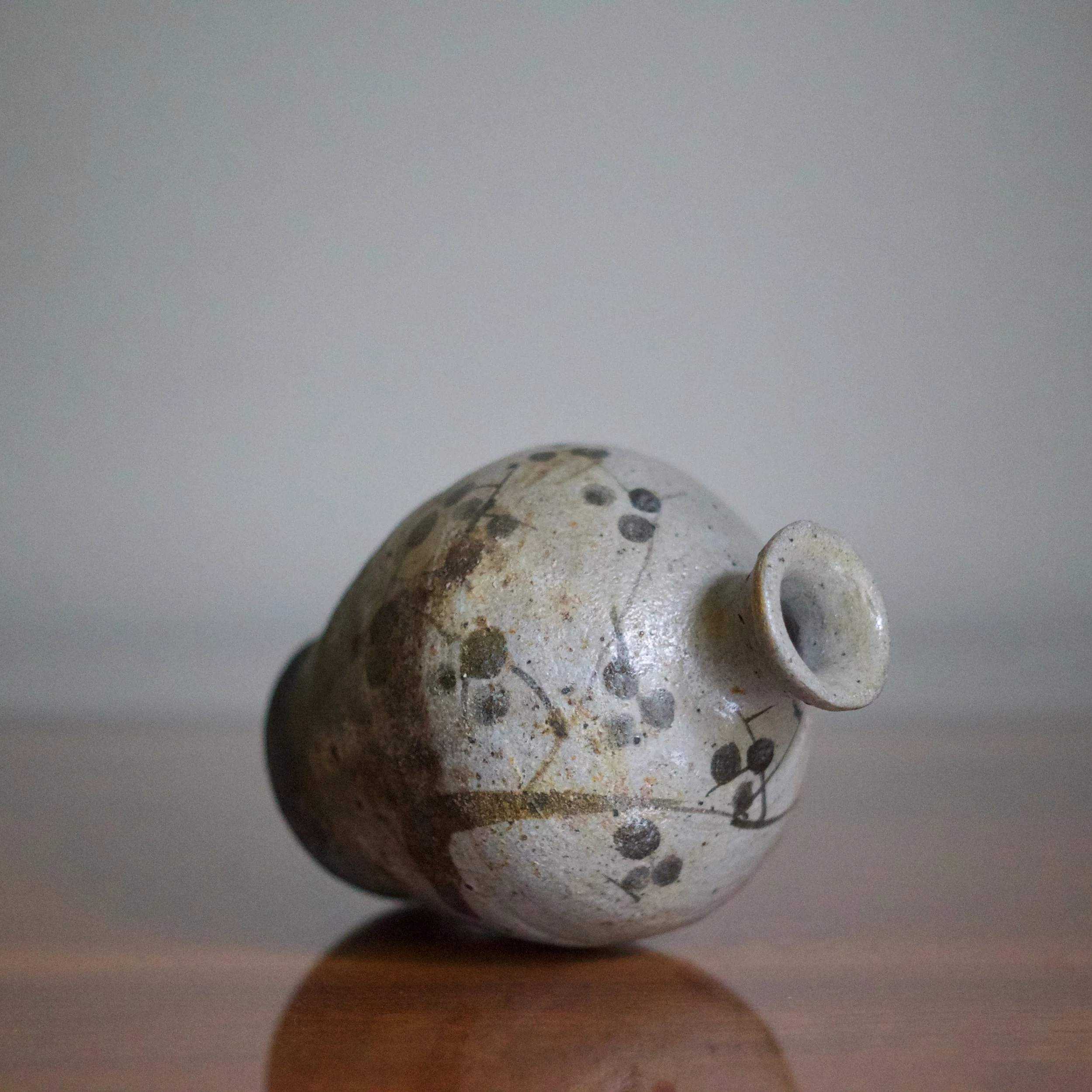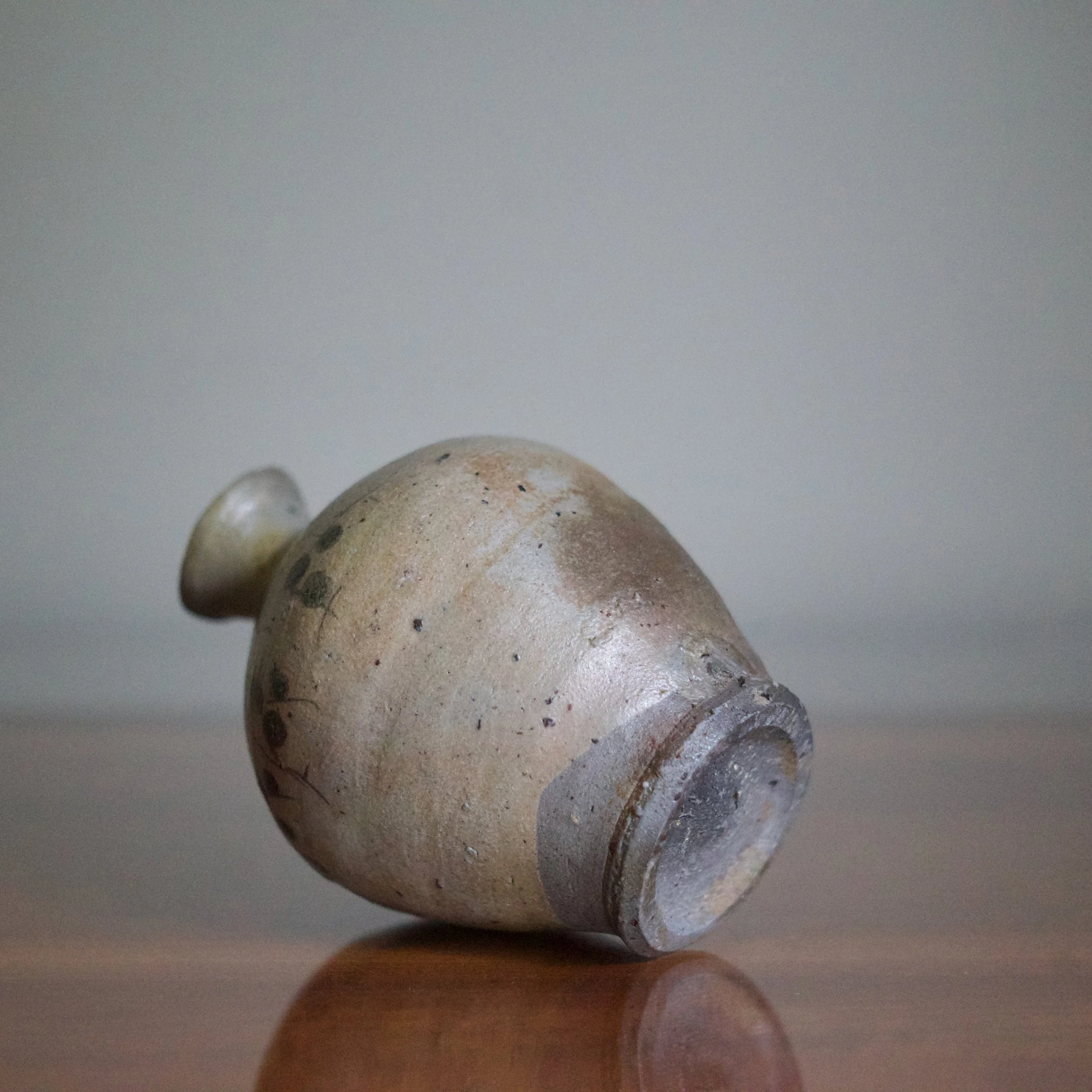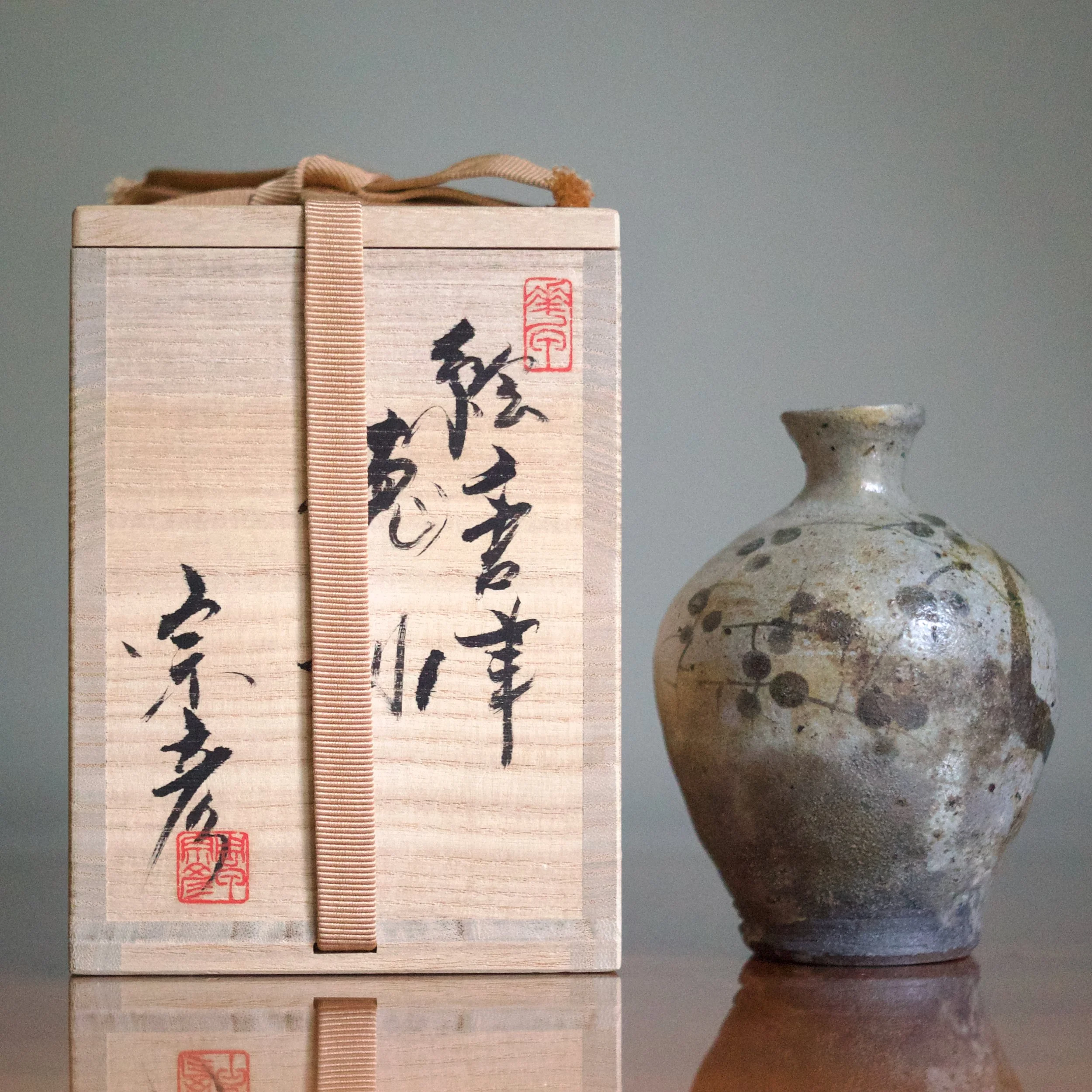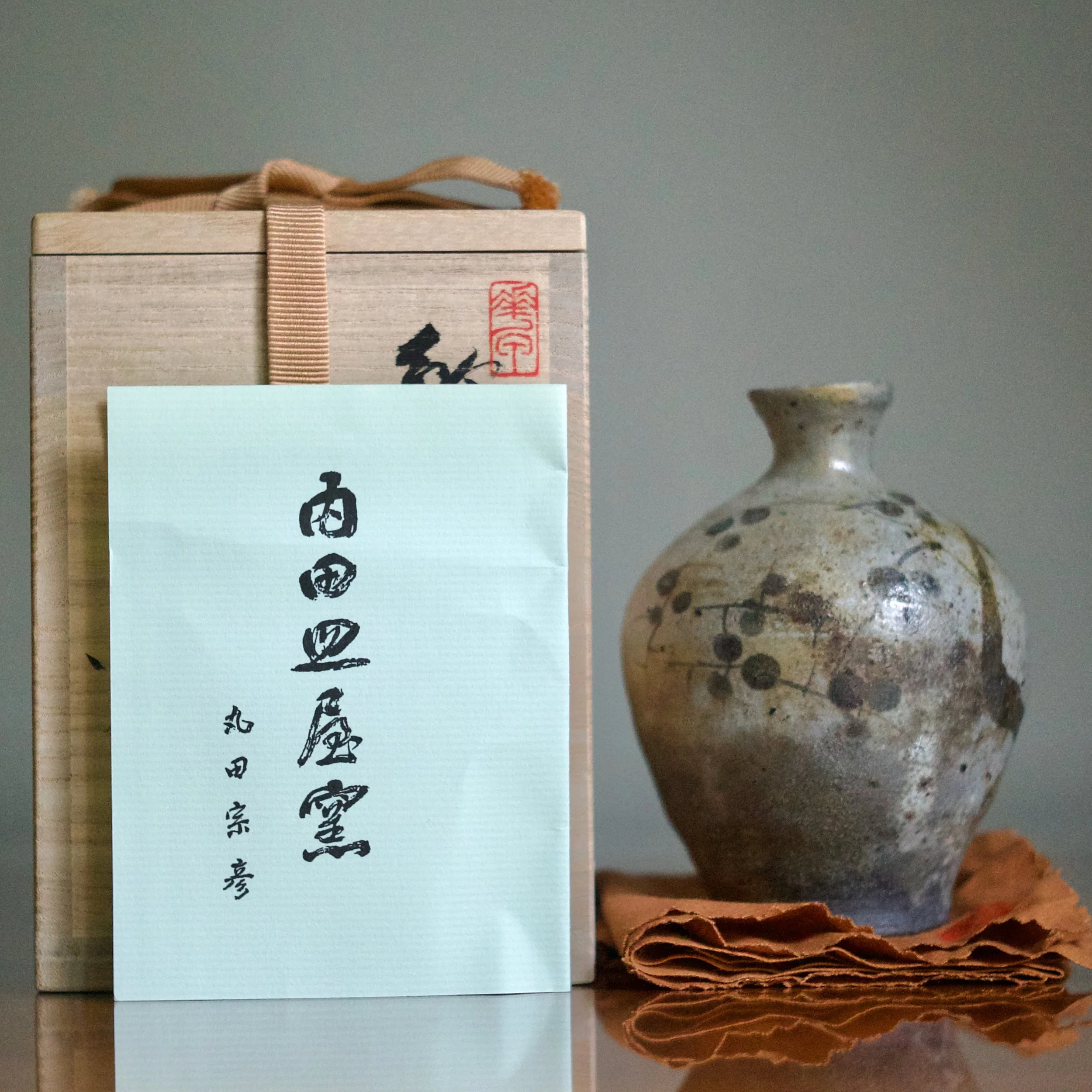Munehiko MARUTA (1961 -)
“絵唐津徳利” e-Karatsu tokkuri
Uchida Saraya-gama, Takeo, Saga Prefecture; c. 2010; 4 3/4” high by 3 3/8” wide
$585 (CAD)
This tokkuri is a fine example of “picture Karatsu” by one of the best potters working in the Karatsu tradition today. Munehiko Maruta is from Saga on the island of Kyushu - the home of Karatsu ceramics - he studied with Hamada Shoji’s son Atsuya. There is an interesting connection between the Maruta and Hamada families as Munehiko’s father Masami himself apprenticed with Shoji.
Which perhaps is not surprising since Hamada Shoji, along with Yanagi Soetsu and Kawai Kanjiro, acknowledged Korean pottery as an important aesthetic antecedent to Japanese ceramics, especially Karatsu ware. In many ways Karatsu ceramics are considered the “most” Korean, as their roots can be traced to the potters who were forcibly brought to Kyushu to establish kilns.
These potters brought with them the natural and “rustic” qualities that would cause a shift in Japanese pottery production and connoisseurship. This aesthetic was recognized by Zen tea masters as embodying a true “wabi” spirit which spurred their adoption as preferred tea wares.
Maruta decorated this tokkuri with spontaneous brushstrokes which depict branches of a persimmon tree, without leaves - ostensibly in the fall or winter - but still spotted with ripening persimmons. It’s a natural and poetic motif like this, simply rendered and evocative of the seasons, that personify e-Karatsu’s simple elegance.
Comes with the signed, stamped, and titled wood box, stamped wrapping cloth and CV.
